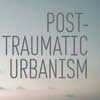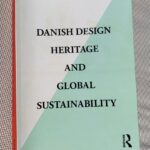Post-Traumatic Urbanism Book, Architecture, Design, Image, Designers
Post-Traumatic Urbanism Book : Publication
Architectural Publication – charts the after effects of trauma
28 Oct 2010
Post-Traumatic Urbanism Book
Conflict. Terrorism. Natural catastrophe. How can architecture respond to a planet at war with itself?
Blasted buildings and bombs, tsunamis, tornadoes and typhoons highlight ‘cities in trauma’ in our daily news.
Urban spaces bear the bruises and scars of these disasters. How are the reverberations of trauma to be understood in urban terms?
A new publication charts the after effects of trauma on cities, communities and cultures.
‘Post-Traumatic Urbanism’ guest-edited by UTS colleagues Adrian Lahoud, Charles Rice and Anthony Burke explores the response of architects and urban planners to these cataclysmic events.
While repair and reconstruction are necessary reflexes, architects need a deeper understanding of the effect of trauma on cities and their communities. Should they restore and recover the lost, or see the post-traumatic city as a space of new possibilities?
The post-traumatic is no longer the exception; it is the global condition.
WHAT: Launch of ‘Post-Traumatic Urbanism’, Architectural Design. Short introduction by editors Adrian Lahoud, Charles Rice, Anthony Burke followed by drinks and canapés.
‘Post-Traumatic Urbanism’ – Wiley Press $47.95 RRP
SYDNEY: Architext, 3 Manning St, Potts Point, Sydney
WHEN: 11 Nov 2010, 7pm
FREE
MORE INFO: 02 9356 2022
Post-Traumatic Urbanism – Further Information
Cities experiencing trauma dominate the daily news. Images of blasted buildings, floods, mudslides and cyclones highlight the ‘immediate impact’. How are the reverberations of trauma to be understood in urban terms?
A new publication charts the aftermath of trauma on cities and communities.
PostTraumatic Urbanism, guest‐edited by UTS colleagues Adrian Lahoud, Charles Rice and Anthony Burke, explores the response of architects and urban planners to the post‐traumatic condition.
‘Urban trauma’ is a condition where conflict or catastrophe has disrupted and damaged not only the physical environment and infrastructure of a city, but also the social and cultural networks.
The term ‘post‐traumatic’ is the evidence of the aftermath – the remains of an event that has been and gone. Urban spaces bear the bruises and scars of the cataclysmic event.
On the one hand, architects can try to restore and recover everything that is lost, or conversely see the post‐traumatic city as a resilient space ready for new possibilities.
While repair and reconstruction are automatic and necessary reflexes, architects need a deeper understanding of the effect of trauma on cities and their communities.
Examples of post‐traumatic urban conditions in Beirut, Shenzhen, Berlin, Baghdad, Kabul and Caracas explore the role architects can play and covers urban conflict, reconstruction, infrastructure development, climate change, public relations, and population growth.
Post‐traumatic urbanism demands the mobilisation of skills, criticality and creativity in contexts in which architects are not familiar.
The post‐traumatic is no longer the exception; it is the global condition.
PostTraumatic Urbanism is published by the prestigious international
Architectural Design magazine in its Profile series.
Contributors include Andrew Benjamin, Tony Chakar, Michael Chertoff, Mark Fisher, Brian Massumi, Todd Reisz, Eyal Weizman and Slavoj Zizek.
BACKGROUND
Adrian Lahoud argues that whilst the world is getting messier, architects have betrayed their responsibilities. And that with September 11 the first world is no longer insulated against terrors familiar to the periphery and the frontier.
Architecture is usually associated with construction, but is there an ‘architecture of destruction’ where bombing and redevelopment share a similar logic?
What does it mean to use the word ‘urbanism’ alongside the word ‘trauma’?
Urbanism is usually understood in terms of ‘reform’, ‘infrastructure’, ‘sustainability’ or ‘innovation’. Linking it to the post‐traumatic means moving beyond efficiency and optimisation to ideas more related to crisis, such as adaptation and resilience.
A resilient city is one that has evolved in an unstable environment and developed adaptations to deal with uncertainty, such as slack and redundancy in its networks. Diversity and distribution, be they spatial, economic, social or infrastructural, will be valued more highly than centralisation or efficiency.
In working out how to create resilient cities, Lahoud argues that we should turn our attention to cities that have experienced trauma, applying lessons learnt in one context to another.
Topics include:
– Should design solutions for a post‐traumatic site be a means to establish historical continuity or open up different sorts of potential?
– A redevelopment plan for Beirut asks – is there a spatial equivalent to the concept of biodiversity? Can spatial diversity encourage social diversity?
– Why does a sense of pervading crisis result in resistance to the implementation of sustainable urban strategies? Is fear a motivator for action?
– Should the proposed reconstruction of a bombed neighbourhood repeat the urban plan to give historical continuity or use the opportunity to create a new future?
– What is the role of image management given that public perception often structures the response to disaster and conflict?
– Why is recent cinema fascinated by urban catastrophe?
– Can the post‐crash image of Dubai be resuscitated by PR consultants?
– What is the emancipatory potential of a high‐speed rail network linking countries in the Mediterranean Union?
Essays
Post‐Traumatic Urbanism; Adrian Lahoud
Trauma Within the Walls: Notes Towards a Philosophy of the City; Andrew Benjamin
The Space‐Time of Pre‐emption: An Interview with Brian Massumi; Charles Rice
Making Dubai: A Process in Crisis; Todd Reisz
Changes of State: Slow‐Motion Trauma in the Gangetic Plains of India; Anthony R Acciavatti
After the Event: Speculative Projects in the Aftermath; Samantha Spurr
Forensic Architecture; Eyal Weizman, Paulo Tavares, Susan Schuppli and Situ Studio
The Infrastructure of Stability; Tarsha Finney
Post‐Apocalypse Now; Mark Fisher
The Eighth Day: God Created the World in Seven Days. This is The Eighth Day; Tony Chakar
Figures in the Sand; Christopher Hight and Michael Robinson
The Urban Complex: Scalar Probabilities and Urban Computation; Anthony Burke
Project for a Mediterranean Union; Adrian Lahoud
Fearscapes: Caracas Postcards from a Violent City; Eduardo Kairuz
Energy Territories; Anthony Burke
Architecture, Contingency and Crisis: An Interview with Slavo Zizek; Adrian Lahoud
The Very Mark of Repression: The Demolition Theatre of the Palast der Republik and the New Schloss Berlin; Khadija Carroll La
On Message: An Interview with Michael Chertoff; Charles Rice
Borderline Syndrome; Ole Bouman
Rebuilding from Below the Bottom: Haiti; Jayne Merkel and Craig Whitaker
GuestEditors
Adrian Lahoud, Charles Rice and Anthony Burke
Adrian Lahoud is an architect, urban designer and researcher. His research interests include the architecture of ‘conflict’ as published in Architectural Design ‘Post‐traumatic Urbanism’ (Wiley 2010). For the last three years he has been researching urban infrastructure in the Middle East and North Africa in the context of a proposed Mediterranean Union (forthcoming 2011). He is completing a doctorate entitled ‘The Life of Forms in the City’ on new types of urban design pedagogy based around scale and computation. He has won awards for residential work through his own practice and also worked for prominent Australian figures in architecture, landscape architecture, urban design and art practice.
He has collaborated on workshops with Dan Graham, Vito Acconci, Graham Harman, Atelier Bow Wow, Eyal Weizman, Diller + Scoffidio and Wolf Prix and with institutions such as the Architectural Association London, Shenzhen School of Architecture and Planning, American University of Beirut and the Chinese University of Hong Kong. He was a regular guest critic at the Architectural Association and the Royal College of Arts in London in 2009. He has been a regular contributor to architectural and political press both in Australia and abroad.
Rice’s research considers the interior as a spatial and experiential category in domestic and urban culture. His book The Emergence of the Interior: Architecture, Modernity, Domesticity was published by Routledge in 2007, and he is currently working on a book manuscript provisionally titled Atrium Effects:
John Portman and Architecture’s Discipline. Here he will consider how questions of urban renewal have, since the 1970s, been linked to particular design strategies which emphasise heightened interior effects. With current thinking and practice so focused on the envelope, climate control and security, thinking through the increasing interiority of urbanism has become a pressing issue.
Burke’s research addresses questions of computational media and technology, and its implications for architecture and urbanism. A graduate of Columbia University’s GSAPP in 2000, he has focused in particular on networks and systems logics within contemporary design, recently co‐editing Network Practices: New Strategies in Architecture and Design (Princeton Architectural Press, 2007) with Therese Tierney. His practice, Offshore Studio, like Lahoud’s practice, works across scales to test this research‐led design thinking.
Post-Traumatic Urbanism Book image / information from JS
Architectural Design
European Architecture Walking Tours : city walks by e-architect
Architecture Design Books – chronological list of publications
Architecture Book Selection
Tham & Videgård Arkitekter book from Arvinius Förlag
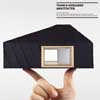
picture from architect
Josep Lluis Mateo Architecture Book
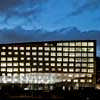
image : Adria Goula
arium book edited by Jürgen Mayer H. & Neeraj Bhatia
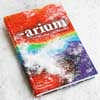
picture from architect
Comments / photos for the Post-Traumatic Urbanism Book page welcome

